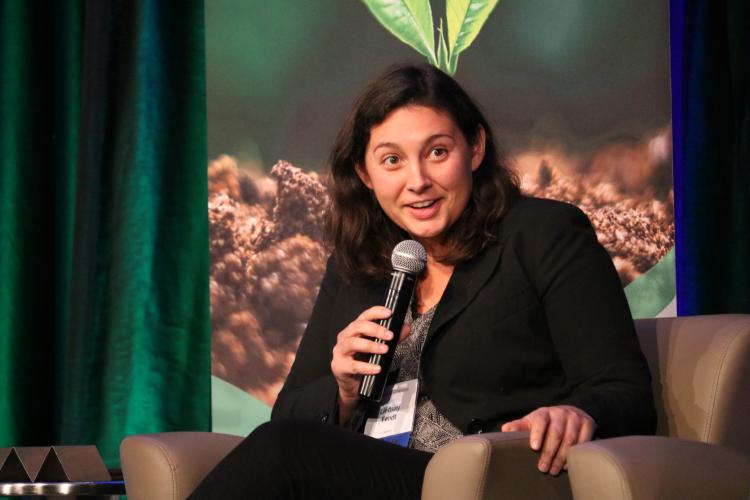Bringing it Back Home, SEJ Conference Returns to Colorado

In true Colorado fashion, conference-goers experienced all four seasons during the 5-day conference. A dusting of snow didn’t stop planned tours, or keep journalists from roaming around the Front Range, engaging and experiencing activities related to many environmental issues: talking about energy at the National Renewable Energy Lab, learning about a toxic legacy at Rocky Mountain Arsenal, absorbing Western water issues at the Continental Divide, seeing wildfire damage above Fort Collins, or getting up close to farming in Greeley, Colo.
The impact of the CEJ was evident in the number of connections among journalists. Several former fellows and students presented on panels, led field trips, and even worked on the planning committee of the conference.
This years conference, which former Scripps Fellow Susan Moran was a conference co-chair for, was a great space for not only Scripps Fellows to reunite, but also for graduate student alumni of the University of Colorado Boulder and Center for Environmental Journalism -- digital editors, staff reporters, freelance journalists, public radio reporters and more.
“There’s an amazing community here and a lot of amazing

“Being able to come to SEJ was--and I don’t use this lightly because it’s very cheesy-

Simpkins said the CEJ added to her experience of going through the master’s program at the University of Boulder Colorado. She described the five fellows are valuable.
“Honestly, they make the program,” Simpkins said. “Peers are great, but you’re all learning at the same time or competing for the same things. The fellows are also peers, but without that sense of competition. They’re mentors.”
At the SEJ conference, Simpkins hosted a panel on the environmental impacts of legal cannabis--a topic she studied during her second year in the CEJ at CU Boulder.
“It’s something a lot of reporters don’t cover normally, so being a student and having that space and time to do it was really interesting,” Simpkins said.
This year Simpkins was selected to host a panel on the environmental impacts of legal cannabis during the conference.
Simpkins wasn’t the only CEJ alum whose work was recognized during the conference. At Saturday’s Environmental Awards Luncheon, Lindsey Fendt, 2017-2018 Scripps Fellow and freelance journalist, won the Kevin Carmody Award for Outstanding Investigative Reporting, Small Market, for her piece "They Took on the Philippines' Powerful Mining Interests, and Are Paying with Their Lives" for World Politics Review.

“Coming to SEJ was also a big deal because I didn’t know anybody, and now I’m here and I feel like I know everybody,” Fendt said in Fort Collins referencing her time during the fellowship.
Fendt spent her fellowship working on a book proposal about the murders of environmentalists. This year, she scored a book deal.
“I think the biggest thing is just the time,” Fendt said about the fellowship. “Having the time to step back and actually figure things out.”
Fendt’s book is set to come out in November 2021.
Another fellow was also recognized during Saturday’s Environmental Awards Luncheon. Sadie Babits, 2017-2018 Scripps Fellow, edited Chris McCrory’s piece “Abandoned Mines” for the Cronkite School of Journalism at Arizona State University, which won the Ray Reece "Excellence in Environmental Journalism" Student Award.
Jeff Burnside, filmmaker, journalist and 2017-2018 Scripps Fellow, was part of presenting the awards at the luncheon alongside CU Boulder alum and freelance journalist Gloria Dickie.
“That one year allowed me to do the kind of work on it that you don’t get paid for, so that’s why it was so valuable to do it, being able to do that during the fellowship,” Burnside said.
Echoing Fendt’s comments on time, Burnside was able to research not just the content of his film project, but the business aspect as well.
Burnside mentioned the camaraderie with fellows was one of his favorite parts of the fellowship.
“Our particular fellowship class was quite close and remain very good friends,” Burnside said.
The 2019 SEJ Conference truly brought it back home for fellows, students, and journalists who have spent time in Colorado.

